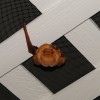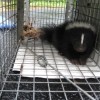Wildlife inspectors is the law enforcement that keeps exotic animals safe in the United States, which is one of the largest exporters of exotic animals in the word. From interesting reptiles to fish and birds, there are at any time large quantities of live things moving in and out of the country. Endowed by the law to keep this wildlife safe, wildlife inspectors work to check northern Virginia and make sure that it continues to have the varied and wide diversity it is known for.
Wildlife Inspectors Look for Food Sources
When a wildlife inspector is looking for a particular land species, the first thing they look for is a source of food. This can range from natural species the predator would eat, to external man made sources. Some of these sources may be doing the species a great deal of harm. As a result, wildlife inspectors do not rule out the human footprint when tracking population numbers.
Wildlife Inspectors Look or Shelter
Another thing a wildlife inspector looks for are different kinds of shelter a species may have. This can range from shelter under a rock, to specially constructed eco systems that are the primary habitat for rare or endangered species. Regardless, the wildlife inspector will track these shelters as they can tell a great deal about population numbers. The lack of shelter as well may play into the analysis, as those places with fewer shelters may be a result of human habitation.
Wildlife Inspectors Seek Out Water Sources
The final thing wildlife inspectors look for is a source of water. This can be for drinking, but also have something to do with habitat. Consumable drinking water is incredibly important to natural species who can get their water from small pools, ponds, streams, rivers, and lakes. How polluted these waters are may mean the difference between life and death for some species. As a result, wildlife inspectors track companies that produce toxins, to see if animals are being poisoned and dying as a result of them.
A water source can also form the home for many species of fish and reptiles. Testing how pure these sources are requires a number of tricks, including looking at the population and health of amphibians. With permeable skin, amphibians are often the first to show signs of a polluted habitat. The general size of the water source is also measured, especially when it comes to using a water source for human consumption.


